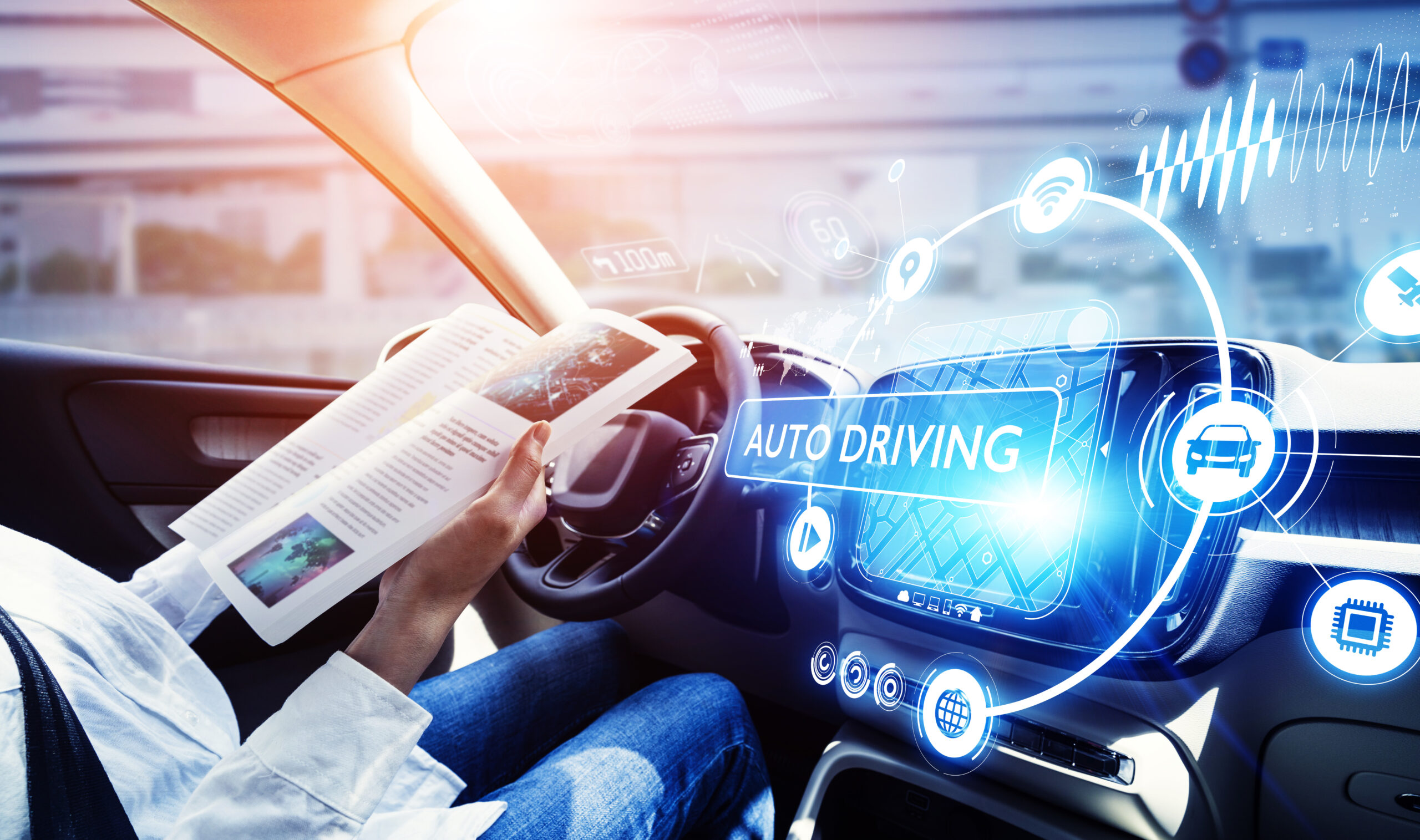The era of fully self-driving cars has begun.
This year, ahead of the practical commercialization of self-driving cars, the world’s interest in self-driving cars is hot.
Self-driving cars are cars that control vehicles without driver’s operation by installing ICT technology in the car, and are called’the convergence of advanced technologies’ in which ICT and the automobile industry converge. However, until now, the autonomous driving function has remained at the level 2 of the American Society of Automotive Engineers (SAE) standard, that is, partially autonomous driving.
Level 2 is where the vehicle is equipped with two or more specific automation systems to control the driver’s speed and steering, parking assistance, and obstacle avoidance. As the technical limitations of conditional autonomous driving are gradually resolved, and regulations and systems in each country are being reorganized, level 3 level autonomous vehicles are expected to spread to the market.

Ahead of the commercialization of practical autonomous vehicles, the world’s interest in autonomous vehicles is hot. ⒸGetty Image Bank
This year, Honda Motor Co., Ltd. will mass-produce the world’s first level 3 self-driving car, and Tesla also announced that it will complete Level 5 technology within this year.Honda car ‘legend‘>
And Motional, a joint venture between Korea’s Hyundai Motor Company and Aptiv, has succeeded in testing unmanned autonomous driving on general roads. In addition, as global ICT companies have improved technological competitiveness compared to finished car makers, expectations for the era of fully autonomous vehicles are rising.
A fully self-driving car that has emerged as a global mega trend. Let’s look at the three core technologies that can realize this.
Self-driving car realization technology One, Data sensor
According to the Technology Trend Report of the Korea Advanced Institute of Science and Technology Evaluation, the core fields of autonomous vehicles can be classified into driving environment recognition, location recognition and mapping, judgment, control, and HCI (Human Computer Interaction).
In particular, the advancement of data sensors, networks, and artificial intelligence technologies, including all these technological components, is the key to enabling autonomous driving of level 3 or higher.
Currently, the largest market in the autonomous vehicle market is sensors that recognize and judge environmental data. This is because autonomous vehicles are a kind of device that generates and collects data through communication with sensors.
Already, global indigenous companies in the field of cameras and radars, such as Intel Mobileye and Infineon, dominate, but recently, R&D of startups is focusing their technology. In Korea, start-ups such as Stradvision and SOS Lab are gradually being recognized for their technological prowess. In the future, it is expected that it will have global competitiveness if the three major fields such as camera, radar, and LiDAR are developed evenly.

Currently, the largest market in the autonomous vehicle market is sensors that recognize and judge environmental data. ⒸMcKinsey & Company
Self-driving car realization technology 2, network
In order to ensure the safety of autonomous vehicle sensors, a stable network must be secured. This is because integrated traffic environment information such as various sensors inside and outside the vehicle, traffic infrastructure, vehicle-vehicle, vehicle-person, vehicle-infrastructure, etc. must be grasped.
Currently, the autonomous vehicle network appears to be a competition between V2X (Vehicle to Everything) and C-ITS.
It is known that the V2X method was developed as a mobility technology from the beginning by the International Organization for Standardization of Mobile Communications in 2017 and is optimized for the driving environment of automobiles. In the second half of last year, the US and China unified the standard with C-V2X.
On the other hand, Korea has verified the DSRC method based on the International Institute of Electrical and Electronic Engineers (IEEE) 802.11p technology completed in 2012, and the government has C-ITS on expressways and major arterial roads by 2025 to commercialize Level 4 fully autonomous vehicles He said he would build a system.
Since the features of the two technologies are clear, development of a hybrid hybrid is one of the options, but a single standard is being selected to reduce the cost and time required to build the infrastructure.

Autonomous vehicle networks need to grasp integrated traffic environment information. ⒸMcKinsey & Company
Self-driving car realization technology 3, A.I
Artificial intelligence is applied to the components of the recognition, judgment, and control technology of autonomous vehicles. This is because artificial intelligence is a vehicle’s’brain’ that provides not only the safety of vehicle occupants, but also convenience, information, and entertainment.
With the commercialization of Level 3 self-driving cars ahead, and with the prospect of level 3 or higher self-driving cars coming soon, the automotive artificial intelligence market is growing very rapidly. Currently, the human machine interface (HMI) is applied to the artificial intelligence of automobiles, and some systems are installed inside the vehicle, and some are provided for cloud servers.
In particular, artificial intelligence systems tend to secure competitiveness by alliances with ICT companies or by acquiring startups by automakers. Overseas, GM’s acquisition of Cruise and Ford’s acquisition of Argo AI are considered representative examples. In addition, Aurora, FiveAI, Uber of the US, Baidu, Pony.ai, AutoX, and Momenta of China are emerging as autonomous driving startups.
In Korea, large ICT companies are testing autonomous driving technologies and developing and developing next-generation communication and proprietary technologies. However, in order for the’end to end’ method to control the entire process of software required for autonomous driving with deep learning and artificial intelligence, it will be necessary to form a player network and a new mobility ecosystem.
(1737)
